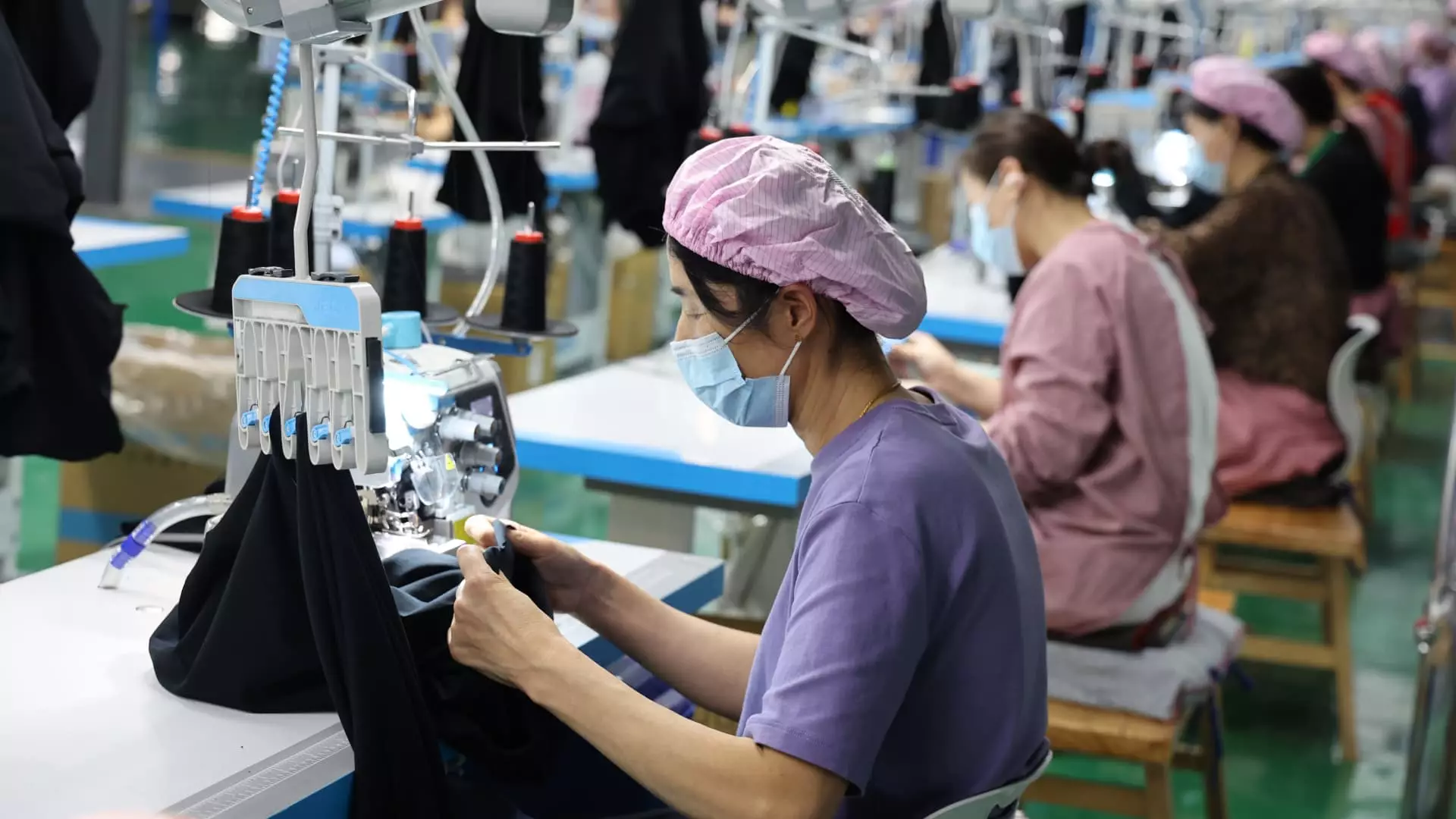As U.S.-imposed tariffs ravage China’s manufacturing sector, the repercussions are stark and startling. The latest wave of tariffs, which have soared to over 100% on certain goods, is not merely a minor inconvenience—it’s a ticking time bomb for the livelihoods of millions. Companies across vital manufacturing hubs such as Yiwu and Dongguan are letting go of workers and ceasing production, invoking a sense of anxiety within the industry. The expertise and craftsmanship honed over decades are now at risk, as factory managers like Li Yan report halting nearly all U.S. orders, reflecting an alarming shift that could devastate the workforce reliant on these exports.
With estimations of around 10 to 20 million jobs tied to exports bound for the U.S., the potential for upheaval is substantial. Combined with the ever-present specter of unemployment, this tactical economic warfare sends chilling ripples through both the Chinese economy and those workers who fear they might be next in line for furlough.
Desperate Times Call for Creative Measures
In the face of such adversity, it would be easy to fall into despair. Yet, necessity often breeds invention. Many manufacturers are pivoting their strategies and exploring alternative markets, even turning to domestic sales through innovative channels such as livestreaming. Companies like Woodswool are adopting modern e-commerce tactics, utilizing new technologies motivated by the harsh economic climate to rebuild their customer base—albeit, predominantly among Chinese consumers who might not share the same taste for Western products.
However, while such adaptation reflects a commendable spirit, it’s essential to acknowledge the disparity between what was once a booming export sector and the fledgling domestic market. The failure to establish a robust connection with local consumers may result in long-term repercussions that extend beyond just temporary losses.
Corporate Survival in the Age of Tariffs
Amidst this turmoil, big players like Baidu and JD.com are stepping into the fray, pledging substantial funds to support exporters. However, even their hefty investments amount to only a fraction—approximately 5%—of the vast trade that China previously conducted with the United States. Such numbers epitomize the disheartening reality that no immediate solution exists to prevent widespread fallout.
It’s certainly commendable for major companies to invest in domestic channels, but does it signify a deeper issue? The systemic fragility of Chinese exporters reveals a vulnerability that could lead to a generation of businesses crumbling under unsustainable financial pressure, driving many into bankruptcy or pushing them to pivot towards potentially unviable markets. Hence, the narrative is not just a mere dance of figures and investments; it’s about reimagining an economic structure that offers genuine stability and sustainability.
Urgent Need for Structural Reform
The broader implications of these tariffs signify the urgent need for structural reform in Chinese manufacturing practices. The traditional business models that have long dominated the sector may no longer be applicable. Innovating supply chains, diversifying market presence, and forging new avenues for growth are essentials if Chinese businesses wish to survive in this ever-evolving landscape.
Additionally, the growing competition amongst Chinese businesses highlights an alarming trend—companies are starting to see themselves as rivals, racing against one another to capture dwindling market opportunities. This competitive strain could ultimately yield decreased product quality, as firms might cut corners to maintain margins. In a landscape increasingly influenced by fleeting trends—brought about by the information age—businesses must become nimbler and more adaptive to consumer desires, or risk extinction.
International Outlook: Beyond the Horizon
China’s path toward recovery will likely include exploring markets beyond the United States. Shifts in focus toward regions like Brazil and other Latin American countries represent a potential revival strategy. As dependence on U.S. trade falters in the face of tariffs, there remains an opportunity for Chinese exporters to establish new customer bases, despite the challenges tied to fluctuating exchange rates and high shipping costs.
Yet, as companies brave these uncharted waters, they must remain aware of the potential cascading effects that could arise from continued tension with the United States. The fallout could very well lead to long-term changes in economic patterns, necessitating a radical transformation of China’s manufacturing and export landscape. Thus, rather than seeking temporary fixes, businesses should embrace a recalibration on how they approach not only production but also their relationship with global economic networks.
In this nexus of challenges and opportunities, China’s next moves will be crucial. The decisions made today could either catalyze a robust return to form or signal a perilous downturn, leaving many to wonder if these troubled times will culminate in revolutionary change or merely prolong the turmoil.

